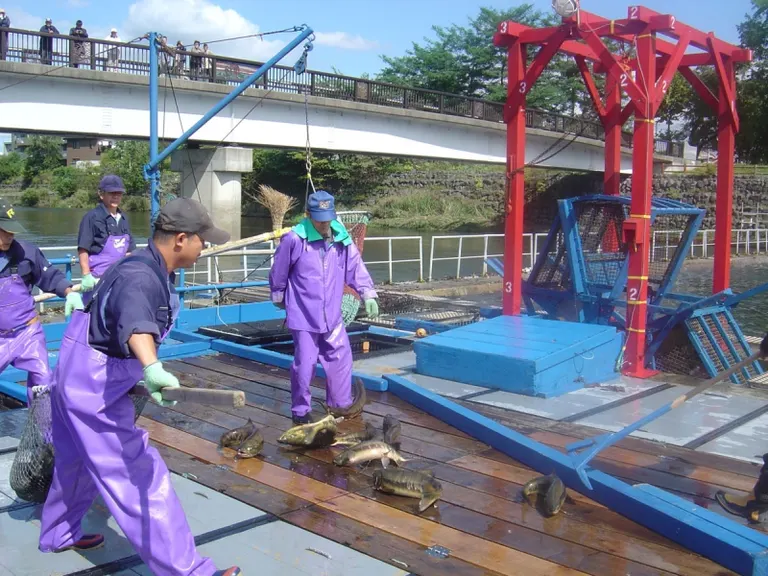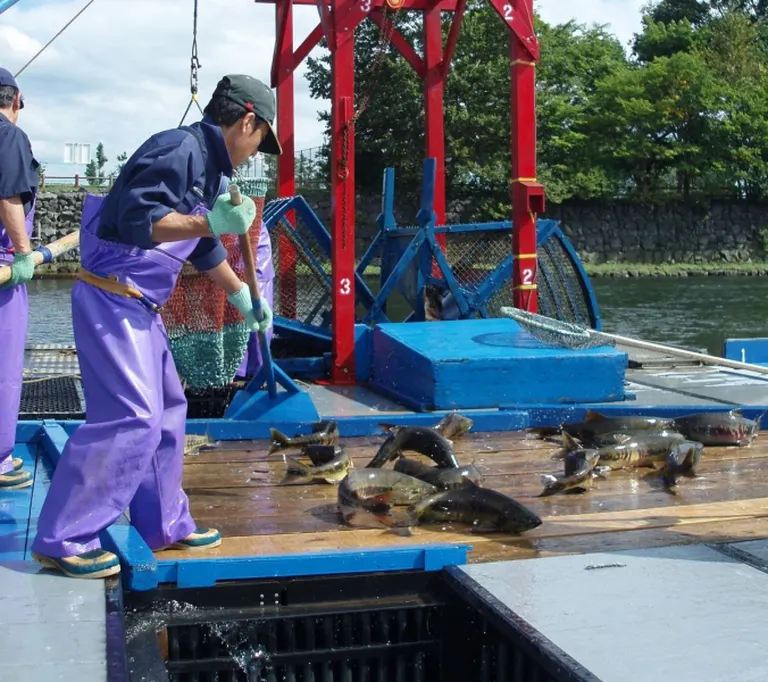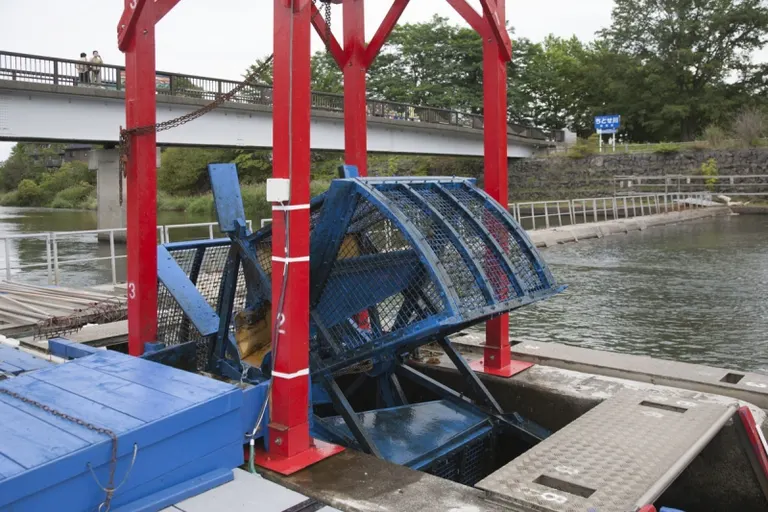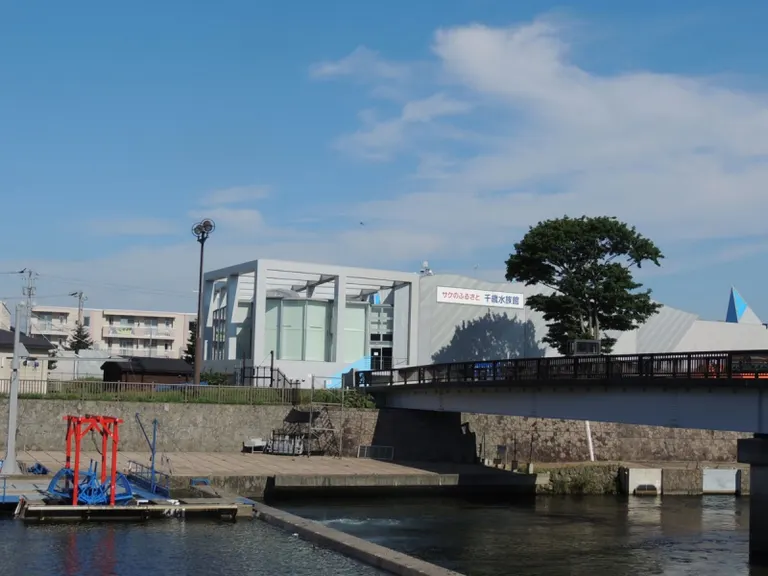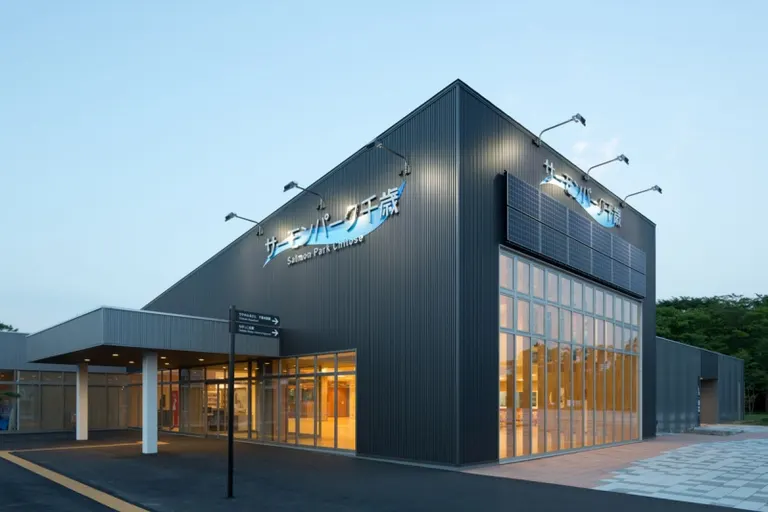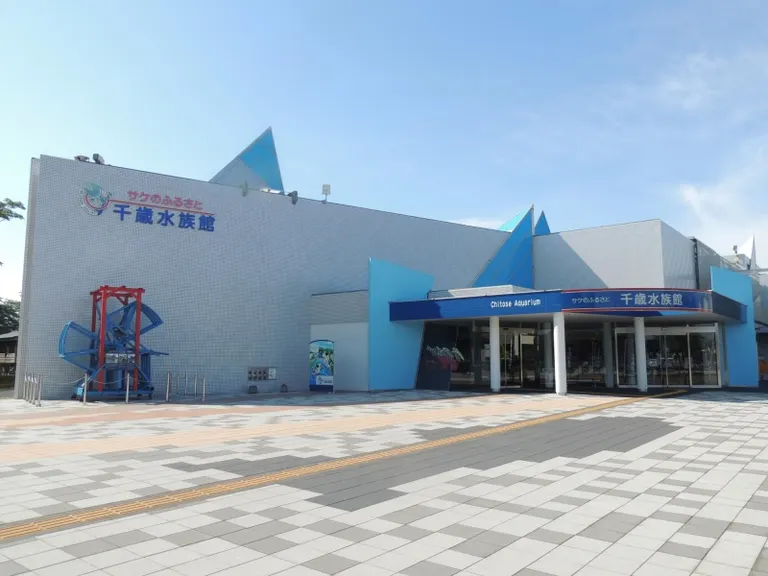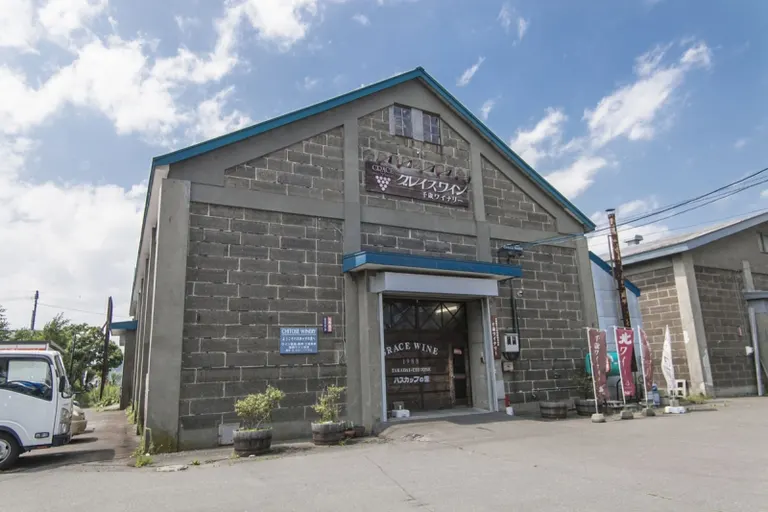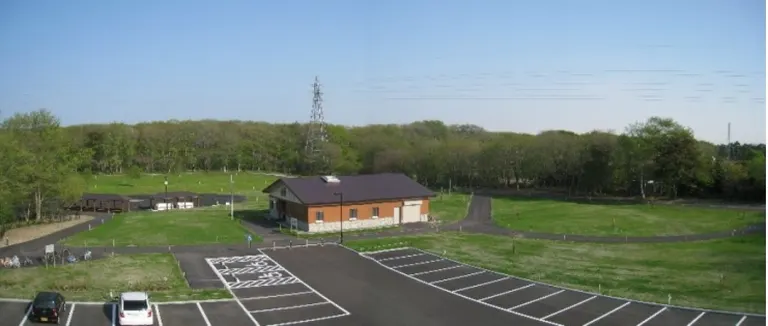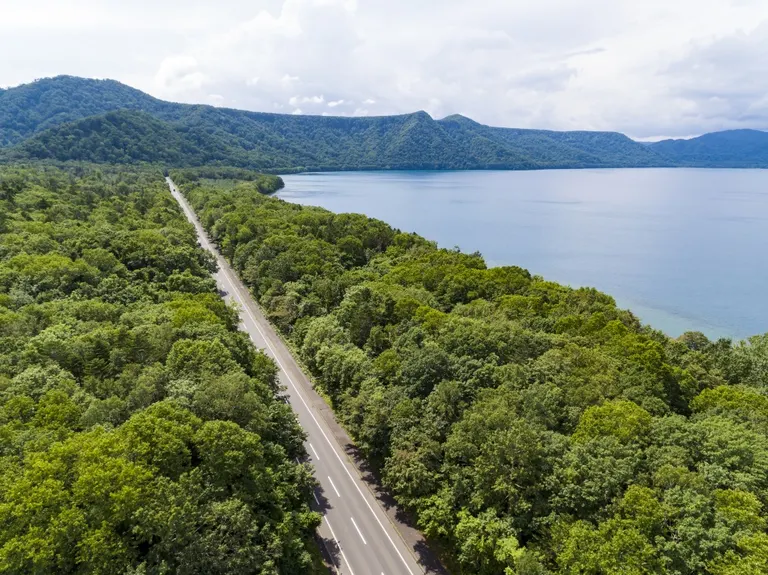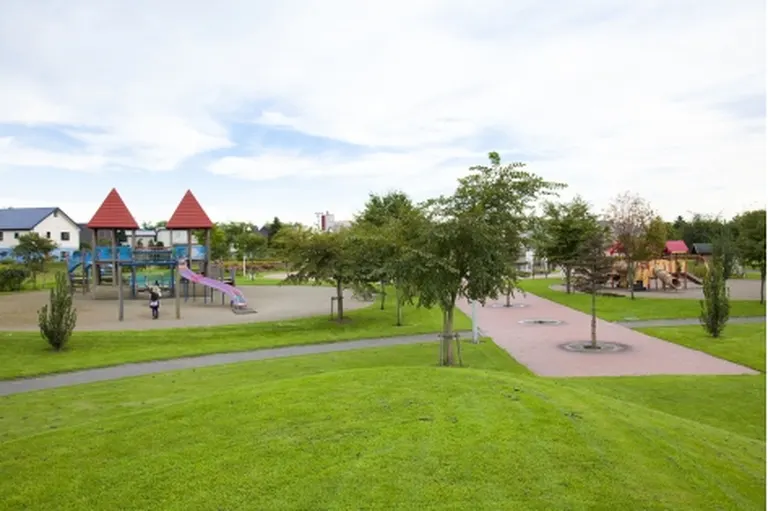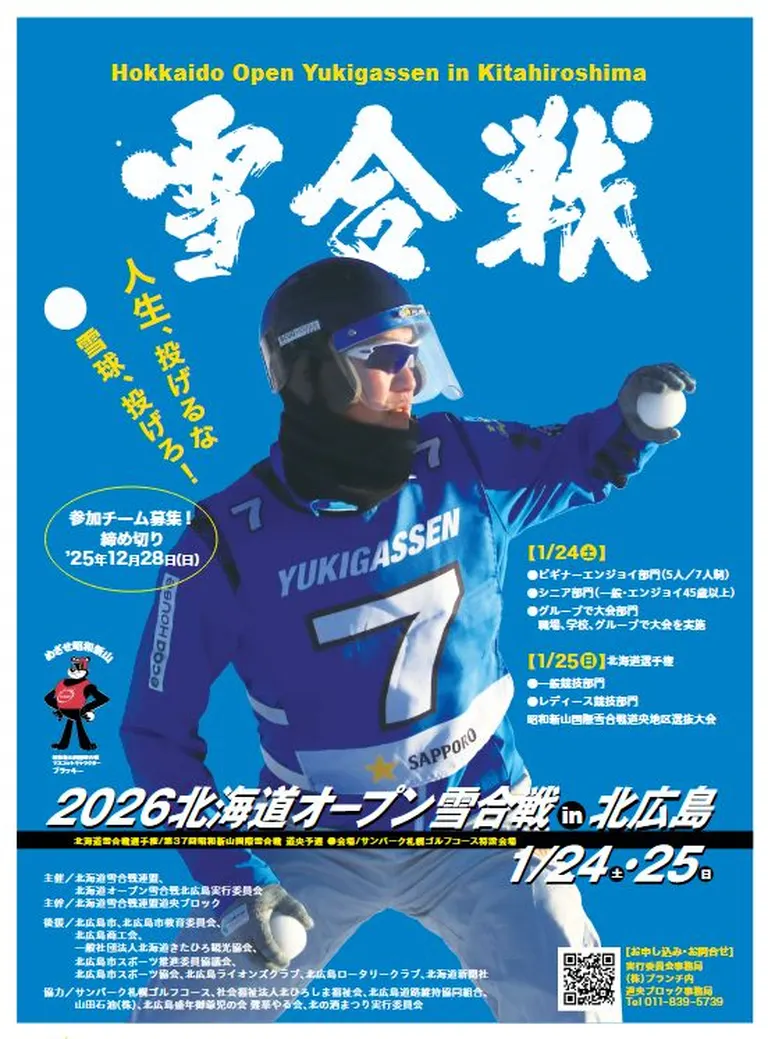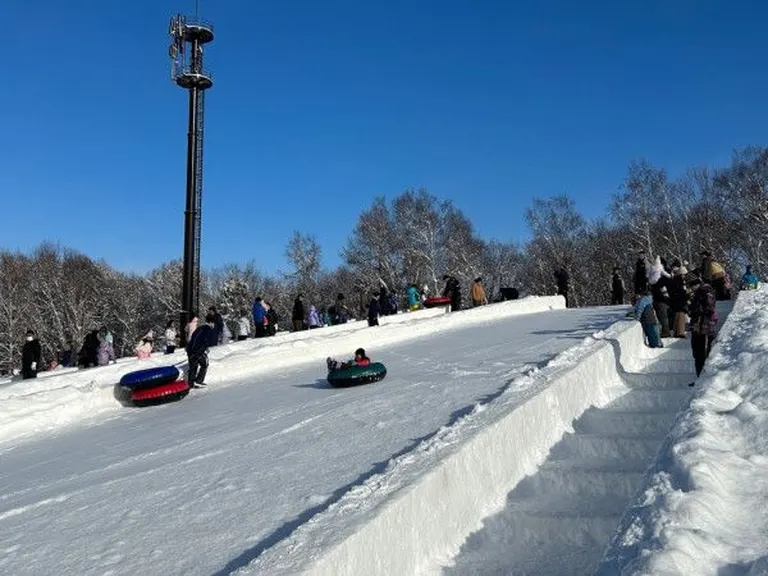SPOT
Indian Water Wheel
In autumn, a fish-catching wheel installed on the Chitose River near the "Salmon Hometown Chitose Aquarium" is popularly known as the "Indian Water Wheel." The year 2016 marks the 120th anniversary of its installation in 1896 (Meiji 2).
This waterwheel is installed to capture parent salmon for use in salmon and trout propagation projects. The river is dammed with a canal and a fishway is opened at one point, and the waterwheel captures the salmon that enter the canal. It is not something that can be installed in every river, but is unique to rivers where the flow rate is almost constant.
Indian waterwheels have been installed in other areas of Hokkaido, but the one on the Chitose River is the only one that runs purely on hydroelectric power, without using electricity.
The history of the Indian waterwheel dates back to 1887, when Kazutaka Ito, who was in charge of the Chitose Hatchery and later became the first director of the Fisheries Division of the Hokkaido Government, went to the United States for training and brought back a design of a fish trapping wheel that he saw on the Columbia River on the west coast. This fish-catching wheel was first installed on the Chitose River in November 1894, and was subsequently improved to its present form.
The sight of salmon being caught by the Indian waterwheel, along with the schools of salmon coming up the river, has become a popular autumn scene in Chitose.
The Indian waterwheel is installed on the Chitose River from mid-August to early December.
Business Hours
Salmon return period: mid-August to early December
Fee
Free
parking lot
Yes (free, use Roadside Station parking lot)
Location
Hanazono 2-chome, Chitose City (adjacent to Roadside Station Salmon Park Chitose)
The information is current as of March 2021.
Please check the official website for details.



